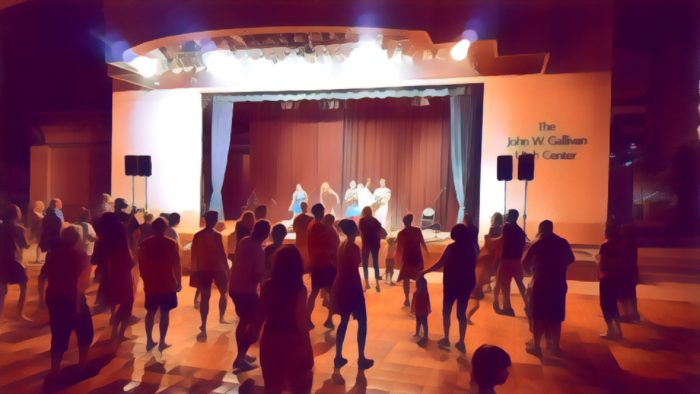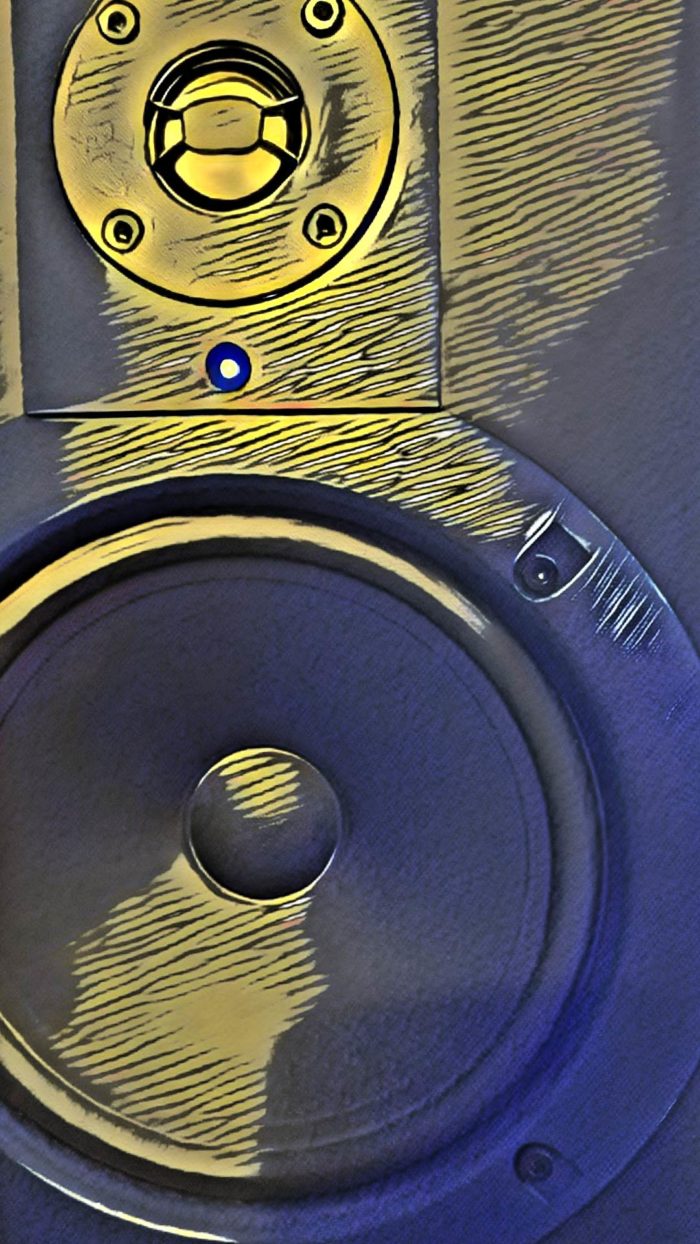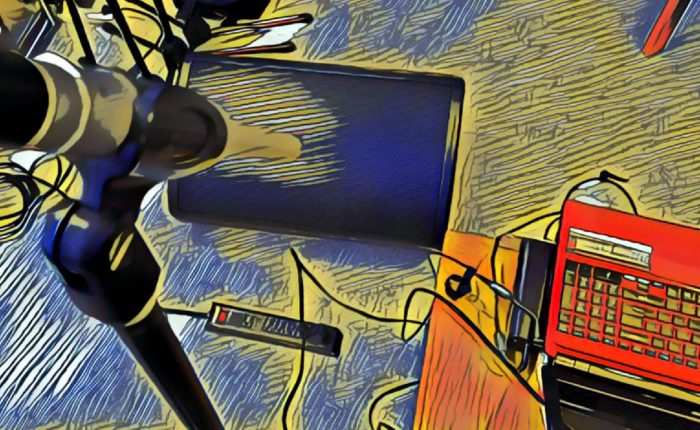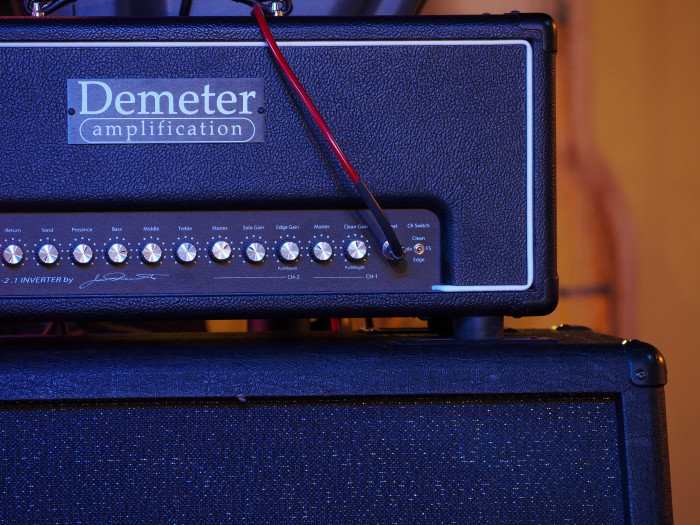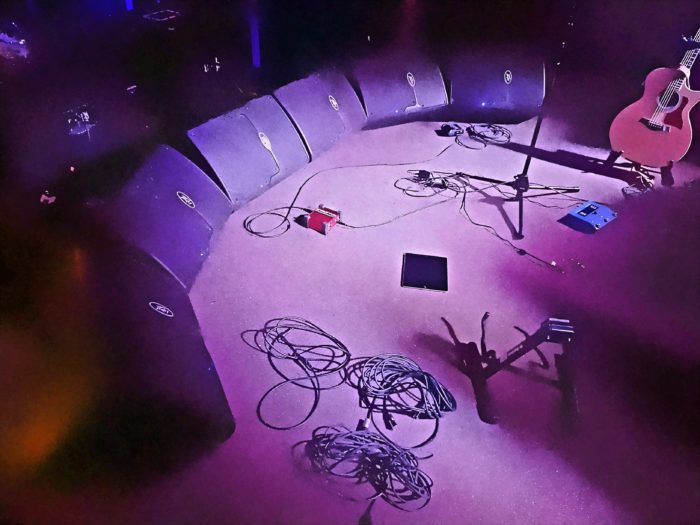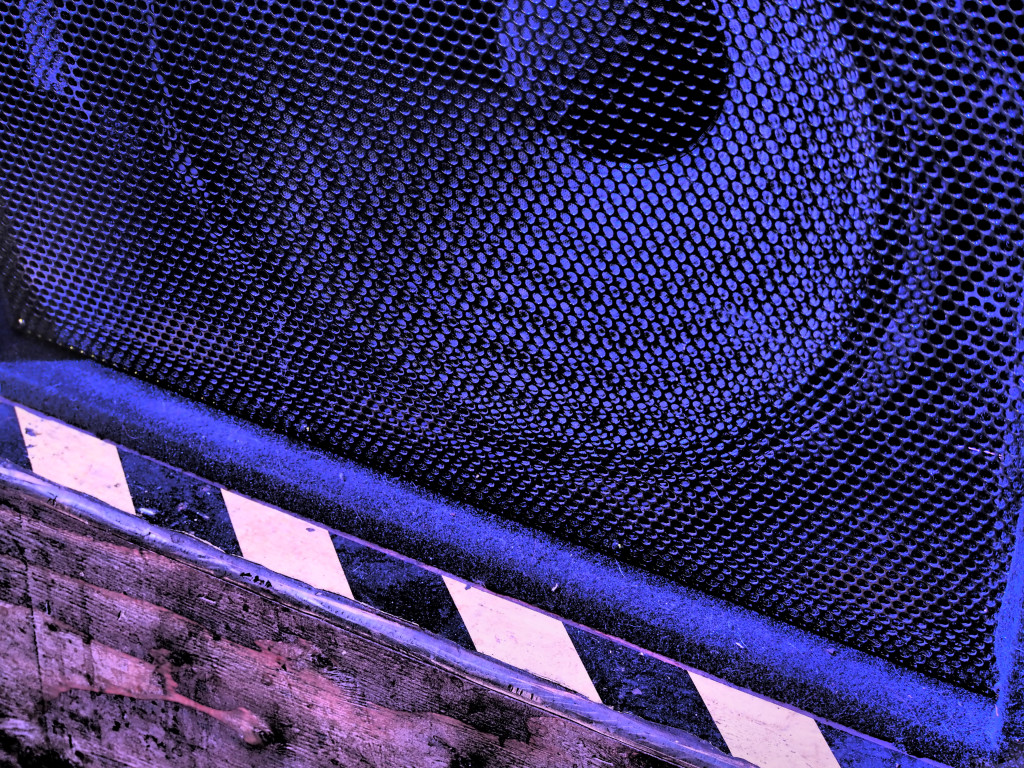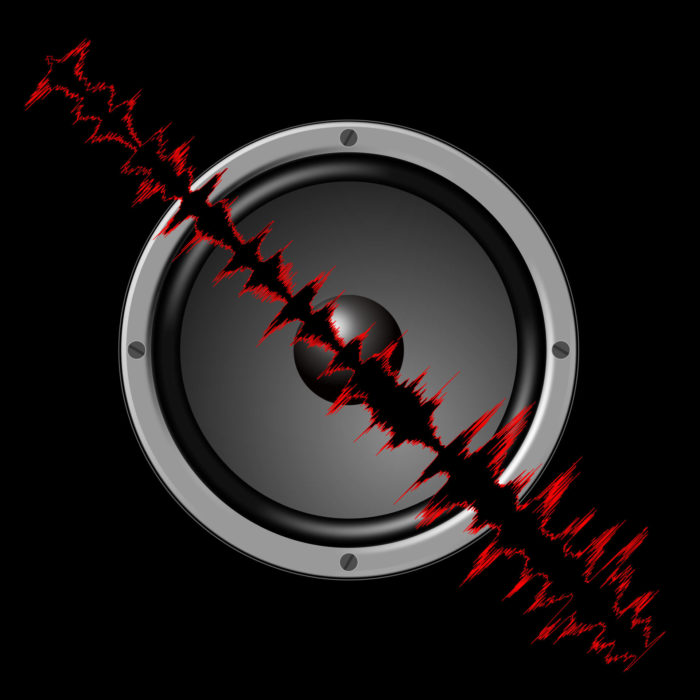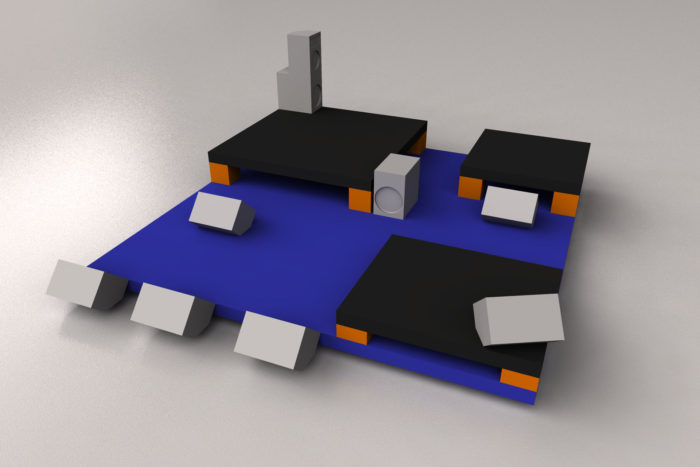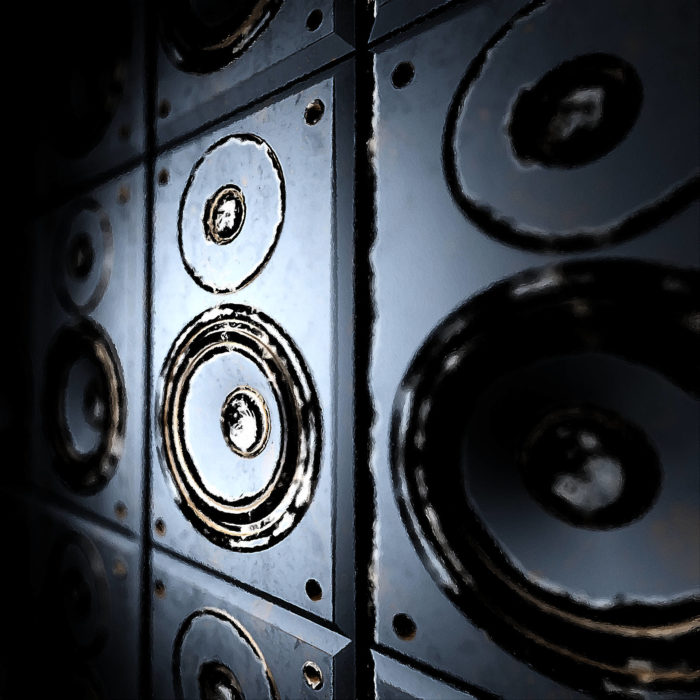Loudspeaker experiments are very educational.
Please Remember:
The opinions expressed are mine only. These opinions do not necessarily reflect anybody else’s opinions. I do not own, operate, manage, or represent any band, venue, or company that I talk about, unless explicitly noted.

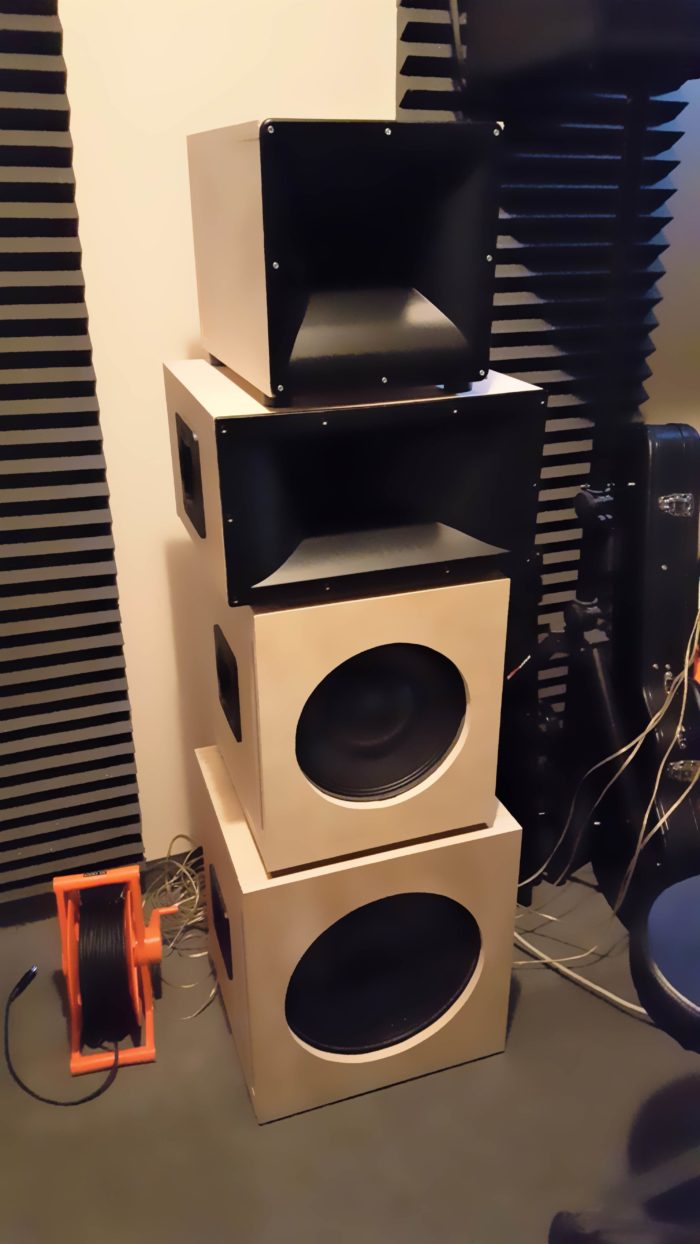 Want to use this image for something else? Great! Click it for the link to a high-res or resolution-independent version.
Want to use this image for something else? Great! Click it for the link to a high-res or resolution-independent version.El Ridiculoso is an idea that’s been bumping around in my head – conceptualized in various morphologies – for years. With the help of the extravagantly cool Mario Caliguiri, who does custom woodworking out here in the high desert, the idea is now incarnated.
Inwoodnated.
Inwoodnated is a real word, because I made it up. All words are made up.
Anyway…
El Ridiculoso is a quad-amped monstrosity meant to go “pretty loud” (but not insanely loud) with 2300 watts of peak input creating about 131 dB of peak, 1 meter SPL. It is very definitely NOT meant to play down low. The conveniently-sized, sealed box for the 15″ driver starts rolling off somewhere around 75 Hz, and really, El Ridiculoso is supposed to be used with subwoofers carrying everything up to 100 Hz anyway. (Sealed boxes are easier to build, and generally pretty forgiving. You can “fudge” the internal volume a bit and still have the whole driver-and-box system work pretty well.)
A few days ago, I got to hook amplifiers up to the boxes and hear them make noise. I found the experience to be rather educational in a few areas.
If You Tune It By Ear You Will Probably Get It Wrong
I set up an X32 mixing console to act as a four-way crossover: You downmix two channels to the main bus, and then send the main bus to matrices 1-4. (The matrices have crossover filters available to them if you have the right firmware upgrade in place.) Because I wouldn’t be working with subwoofers for the test run, I started off by putting the 15’s high-pass at 75 Hz, with the low-pass at 400 Hz. The 12 handled 400 – 1600, the big horn did 1600 – 6400, and the smaller horn took everything above that.
And, of course, I started out by playing music and pushing the different bandpass levels around.
I ended up with an overall sound that was reasonably pleasing, but somewhat tubby (or resonant) at certain bass frequencies. I wondered if the 15’s box was booming for some reason – maybe it was acting like a drum?
In any case, I decided it was time to do some measuring for a real, honest-to-goodness magnitude line-up of the boxes. As I started running sweeps and making adjustments, one thing became VERY clear: Tuning the system by ear had sent me way off course. In some cases, 10+ dB off course. (!)
A Basic Bandpass Magnitude Alignment Fixes A Lot
When you’ve missed the mark as far as I had, information that should blend nicely with other information…doesn’t. You get things like overpowering bass notes, because the crucial midrange just isn’t there to balance it all out. I was actually pretty stunned at just how much better the stack sounded with all the boxes in basically the right place, volume-wise. The music I was playing suddenly started to have the tonal characteristics I’d grown used to from listening at home.
This was without any corrective EQ, which is what I worked on next.
Going through and getting a fine-detail equalization solution certainly changed things, but the difference was not nearly as pronounced as what had happened before. This surprised me as well. I had expected that applying the “make-em-really-flat” solution would result in a massive change in clarity, but really, we were most of the way there already.
Large Horns Make Large Noise
I discovered rather quickly that sitting with my head right up against the 2″ driver-exit horn was unpleasant. The amount of noise that thing can make is impressive. The matrix feed to that bandpass ended up being 12 dB down from everything else, and I still preferred being across the room. I’ve known for years – at an academic level – that 2″ exit compression drivers are used when you need to tear faces off, but this was the first time that I even got a whiff of what they’re really capable of.
Awesome But Impractical
Playing with El Ridiculoso is a great treat, but I can’t imagine getting three more built for regular gigs. For a start, they’re relatively complicated to set up, because all the bandpasses are in separate enclosures…and there are four bandpasses per speaker system. Big-boy loudspeakers might have three bandpasses, but they package them all into a single cabinet. Plus, you usually get one Speakon connector which you can use to mate all your power channels to all your drivers in one click. El Ridiculoso needs four separate connections to work.
Add to that the need for subwoofers in many cases, and now you’ve got a five-way system. Then you have to add all the amplifiers necessary, and all the crossovers/ system management, which results in a pretty hefty drive rack or two. Then you have to add all the speaker cable. You end up spending a lot of money, and a lot of weight, just to make the things work.
And, the only way to get them up in the air is scaffolding, or stacking them on a big pile of subs.
In the end, a compact, ultra-engineered box from a major manufacturer really has the advantage. El Ridiculoso sure does have a lot of “cool factor” as an exotic idea, but a good, solid, self-powered biamp unit will go just about as loud and require far less care and feeding to be day-to-day useful.
This doesn’t mean I’m sad about the experiment. I knew from the beginning that I wasn’t going to design a better mousetrap than every speaker manufacturer on the planet. What I wanted is what I got: A different implementation that I could use to get more hands-on understanding of how these things work.
